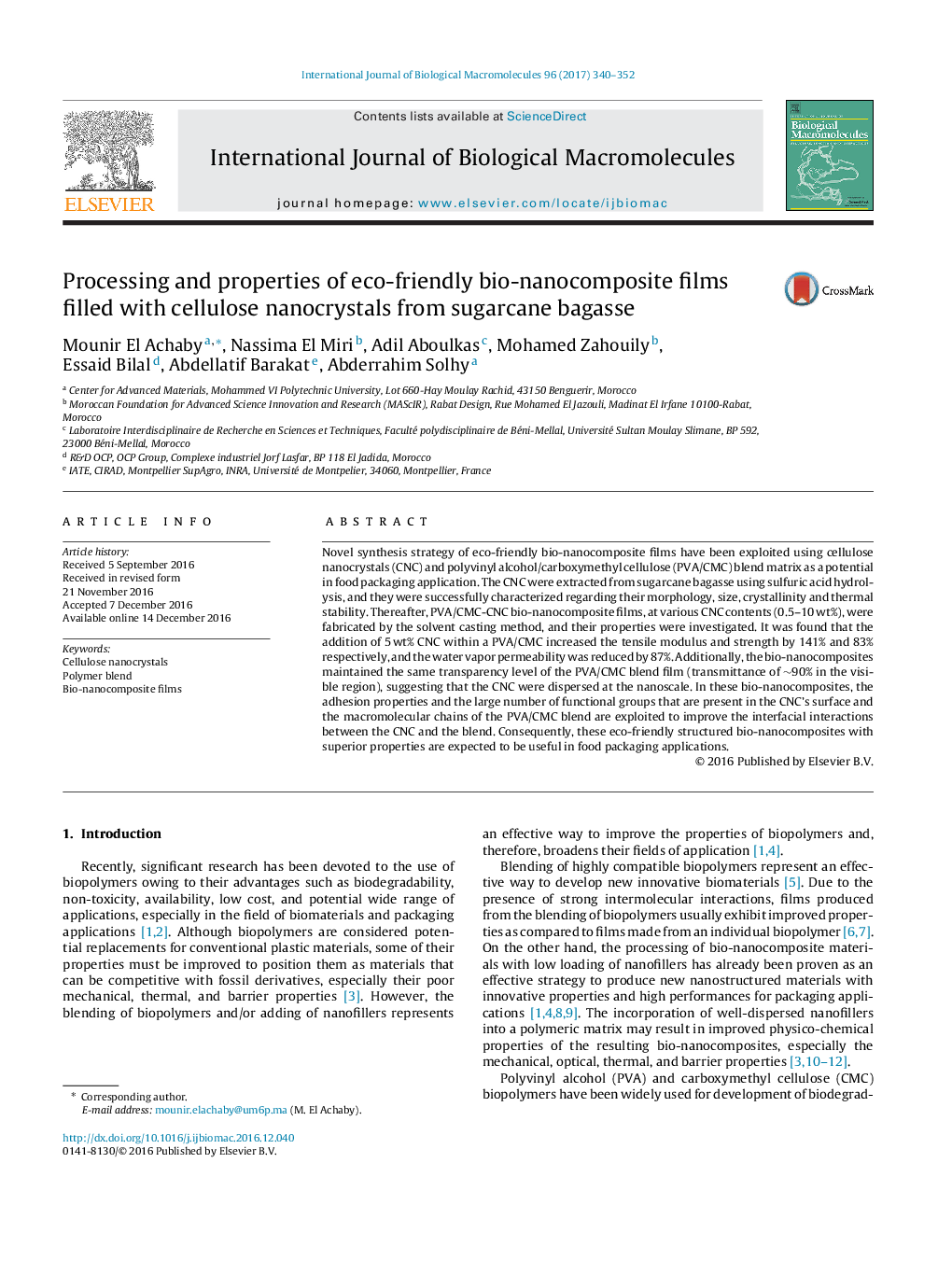| Article ID | Journal | Published Year | Pages | File Type |
|---|---|---|---|---|
| 5512192 | International Journal of Biological Macromolecules | 2017 | 13 Pages |
Novel synthesis strategy of eco-friendly bio-nanocomposite films have been exploited using cellulose nanocrystals (CNC) and polyvinyl alcohol/carboxymethyl cellulose (PVA/CMC) blend matrix as a potential in food packaging application. The CNC were extracted from sugarcane bagasse using sulfuric acid hydrolysis, and they were successfully characterized regarding their morphology, size, crystallinity and thermal stability. Thereafter, PVA/CMC-CNC bio-nanocomposite films, at various CNC contents (0.5-10Â wt%), were fabricated by the solvent casting method, and their properties were investigated. It was found that the addition of 5Â wt% CNC within a PVA/CMC increased the tensile modulus and strength by 141% and 83% respectively, and the water vapor permeability was reduced by 87%. Additionally, the bio-nanocomposites maintained the same transparency level of the PVA/CMC blend film (transmittance of â¼90% in the visible region), suggesting that the CNC were dispersed at the nanoscale. In these bio-nanocomposites, the adhesion properties and the large number of functional groups that are present in the CNC's surface and the macromolecular chains of the PVA/CMC blend are exploited to improve the interfacial interactions between the CNC and the blend. Consequently, these eco-friendly structured bio-nanocomposites with superior properties are expected to be useful in food packaging applications.
